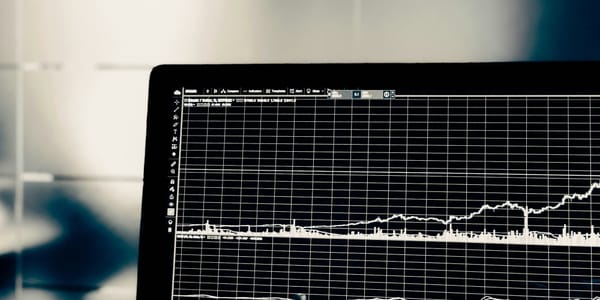The Millennium Prize Problems: Unraveling the Mysteries of Mathematics

In the year 2000, the Clay Mathematics Institute unveiled a tantalizing challenge to the world's mathematicians: solve any of the seven Millennium Prize Problems and earn a reward of one million dollars. These problems, each a monumental puzzle in its own right, have intrigued and stumped the brightest minds for decades. As of now, only one—the Poincaré Conjecture—has been solved. Let’s delve into the six remaining enigmas, explore the attempts to crack them, and consider the theories that might one day lead to their solutions.
The Riemann Hypothesis: The Prime Puzzle
The Riemann Hypothesis stands as a towering question in mathematics, shrouded in mystery since it was first posited by Bernhard Riemann in 1859. It suggests that all non-trivial zeros of the Riemann zeta function—a complex function deeply intertwined with the distribution of prime numbers—lie on a critical line in the complex plane, where the real part is 0.5.
Despite numerous attempts, this hypothesis remains unproven. Its resolution is believed to hold the key to understanding the elusive pattern of prime numbers, a fundamental aspect of number theory. Mathematicians are employing sophisticated techniques from complex analysis and algebraic geometry, hoping to unlock this century-old secret[1][3][5].
The Birch and Swinnerton-Dyer Conjecture: A Dance with Elliptic Curves
Elliptic curves, elegant and complex, are at the heart of the Birch and Swinnerton-Dyer Conjecture. This conjecture proposes a profound link between the number of rational points on an elliptic curve and the behavior of an associated L-function at a specific point.
Progress has been made for curves of rank 0 or 1, but the general case remains unsolved. Researchers are exploring the rich interplay between elliptic curves, modular forms, and arithmetic geometry, seeking a pathway to a comprehensive proof. The solution could revolutionize our understanding of number theory and cryptography[5][7].
The Hodge Conjecture: The Geometry of Algebra
In the realm of algebraic geometry, the Hodge Conjecture poses a fundamental question: Can certain cohomology classes be represented by algebraic cycles? This conjecture invites mathematicians to explore the intricate relationship between geometry and topology.
While proven in specific cases, the general conjecture remains open. Theories involving complex geometry and topology are being developed, with mathematicians aiming to bridge the gap between abstract algebraic concepts and tangible geometric representations[2][6][8].
The Navier-Stokes Existence and Smoothness Problem: The Fluid Frontier
Fluid dynamics, the study of how liquids and gases move, relies heavily on the Navier-Stokes equations. The challenge is to determine whether solutions to these equations always exist and remain smooth in three dimensions.
The Navier-Stokes problem is crucial for advancing our understanding of phenomena like weather patterns and aerodynamics. Researchers are investigating whether solutions can develop singularities, or "blow up," in finite time. Computational fluid dynamics and simplified models offer insights, but a definitive answer remains elusive.
The Yang-Mills Existence and Mass Gap Problem: The Quantum Quandary
In the world of theoretical physics, the Yang-Mills problem seeks to establish a rigorous mathematical framework for quantum field theories that describe elementary particles, predicting a positive mass gap.
This problem is deeply connected to the mathematical formulation of quantum mechanics and gauge theory. Advances in understanding non-abelian gauge theories are essential for progress. Mathematicians and physicists are collaborating to define and prove the existence of Yang-Mills theories with a mass gap, a breakthrough that could transform our grasp of the universe's fundamental forces.
The P vs NP Problem: The Computational Conundrum
The P vs NP problem is a cornerstone of theoretical computer science. It asks whether every problem whose solution can be quickly verified by a computer can also be quickly solved by a computer.
This question has profound implications for cryptography, optimization, and algorithm design. Despite extensive research, no one has yet proven or disproven the equality of P and NP. Theoretical computer scientists are exploring complexity theory and combinatorial optimization, hoping to unravel this computational mystery.
Conclusion: The Quest Continues
The Millennium Prize Problems represent the pinnacle of mathematical challenge and curiosity. Each problem is not just a puzzle but a gateway to potentially transformative discoveries in mathematics and science. As researchers continue their quest, new theories and techniques will emerge, bringing us closer to solutions that could reshape our understanding of the mathematical world. The journey is as thrilling as the destination, and the pursuit of these problems promises to inspire generations of mathematicians to come.
Citations:
[1] "Imagining Numbers" (Particularly the Square Root of Minus Fifteen)@@@"Abel's Proof": An Essay on the Sources and Meaning of Mathematical Unsolvability@@@"The Riemann Hypothesis": The Greatest Unsolved Problem in Mathematics https://www.semanticscholar.org/paper/23a96cb6371664d6964234d0f38447e0cd972970
[2] Hodge-theoretic invariants for algebraic cycles https://www.semanticscholar.org/paper/23614ff839decce18eeb75b1aeeb7efe4aee2610
[3] APOLOGY FOR THE PROOF OF THE RIEMANN HYPOTHESIS https://www.semanticscholar.org/paper/18068c845235a92b058b60cc963f0dbc259c6fbd
[4] Periods of CY $n$-folds and mixed Tate motives, a numerical study https://arxiv.org/abs/1908.09965
[5] The Riemann hypothesis in characteristic p , its origin and development Part 3 . The elliptic case https://www.semanticscholar.org/paper/1063d53fe7f5093e88b6a91c002eeaba3f86a2be
[6] Torsion algebraic cycles and complex cobordism https://arxiv.org/abs/alg-geom/9609016
[7] A CONCISE ACCOUNT OF THE WEIL CONJECTURES AND ETALE COHOMOLOGY https://www.semanticscholar.org/paper/864bea4273b2042efe7ff8e885378d81dca86df3
[8] Mumford Tate groups and the Hodge conjecture https://arxiv.org/abs/2301.01005



